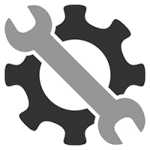Performance Considerations
Performance Considerations
Why do I have a low frame rate?
There are several reasons why your frame rate (fps) might be low, resulting in single frames being strongly noticeable when moving in Enscape.
Your computer’s system specifications are too low
- Enscape renders use only a dedicated GPU. A GPU such as an AMD Radeon Pro 5300m with 4GB or a M1 with dedicated GPU cores is recommended and the more VRAM/RAM there is on the GPU, the better Enscape will generally perform. It’s worth checking our System Requirements from time to time and on each release as these are subject to change.
Your project is too large
- Project size can be, but is not always, an issue. Projects containing a lot of fine tessellated geometry, such as pipes, cables, and furniture, or lots of high-res textures might overwhelm your computer. Hiding small but detailed elements in your project can help.
Performance issues can generally be improved by adjusting the Rendering Quality, under the Visual Settings window – Main tab, to a lower value. We recommend setting this to High if you find performance sub-optimal. This will boost performance by turning off some of the more expensive rendering features.
Setting the Rendering Quality to Draft will give you the best performance, but at the expense of losing reflections.
This will boost performance by turning off some of the more expensive rendering features.

Rendering Quality slider within the General settings tab
Your screen resolution is too high
- You can increase your real-time performance by simply adjusting the size of the Enscape window. However, when you are wanting to render an image out, make sure that the Resolution is set to the desired resolution for the final render, and not set to Window. Here you can see that the Capture Resolution is set to FullHD, which is the equivalent of ‘1080p’.

Resolution settings
Further Performance Settings
Under the General Settings – Rendering tab, Enscape provides further options to enhance performance:
NVIDIA Global Illumination Denoiser – Improves denoising of ray-traced diffuse and specular global illumination, powered by NVIDIA Real-Time Denoisers (NRD) SDK.
Auto Resolution – Dynamically reduces the resolution to ensure a smooth navigation and frame rate. If deactivated, the native window resolution will be used. This has no effect on rendered export.
Auto Upsampling – Upsampling is automatically activated in case the graphics card runs out of memory during capturing. Disable in case of quality degradation.
Grass/Carpet Rendering – When disabled, a slight performance increase can be had, but carpet and grass will geometry will not be rendered.
Restmode – When enabled, animations will stop a few seconds after you cease movement in the Enscape viewport.

Further Perfomance Options
Monitor your GPU's Performance
Although Enscape does not offer a way to natively monitor your GPU performance, it is possible via other methods to get some idea about the GPU performance whilst Enscape is running. The following suggestions may not give you totally accurate statistics but do go some way to monitor GPU performance in the first instance.
The first option is to open the Activity Monitor application which is included by default in all macOS installations. Just search for ‘Activity Monitor’ in your Launchpad.
The Activity Monitor displays all currently running processes on your system, including Rhino and EnscapeApplication. You can set up the Activity Monitor in many different ways. We recommend switching to GPU Processes in the View menu and enabling columns like %CPU, %GPU, Real Mem to get an idea of what the GPU is using and if you are overloading your system.

Activity Monitor showing GPU and memory usage
How can I decrease the loading time?
For some projects, Enscape’s initial loading time can take a few minutes whilst it loads all the information required.
Loading time is also determined by how quickly the CAD software can communicate the content of the project. The more complex your project is in the CAD software, the longer it may take for Enscape to load. To shorten loading times, try the following:

Download the newest version of Enscape as we’re continuously working on improving the loading time.
Hide small yet detailed objects, such as cables, triggers, pipes, etc.
Use a dedicated SSD for your CAD installation and project files.
Upgrade your computer. Exporting time is limited by your CPU, RAM and hard disk speed.

